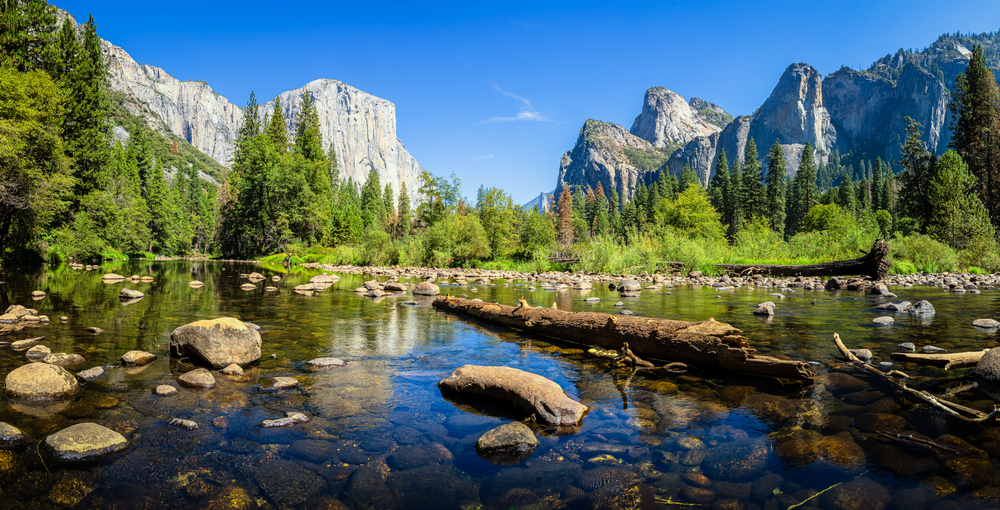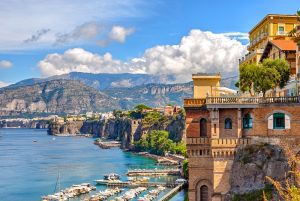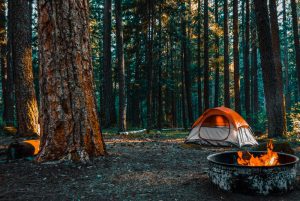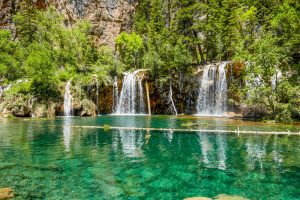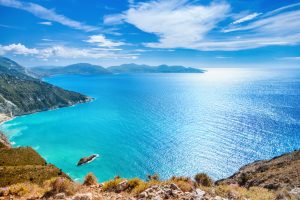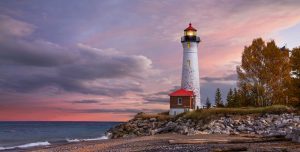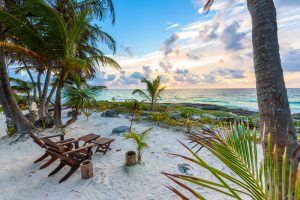Known for being one of the largest-spanning states in the country, it’s no wonder that California has an abundance of natural wonders to explore.
There are 9 national parks to visit, each one more amazing than the last, 280 state parks, and too many beautiful beaches to count – so narrowing down the best natural wonders can be a difficult task.
Lucky for you, we’ve compiled a list of 30 of the most amazing natural wonders, popular attractions, and hidden gems to help you make the most of your time in California. Scroll down to see more!
Table of Contents
1. Artists Palette
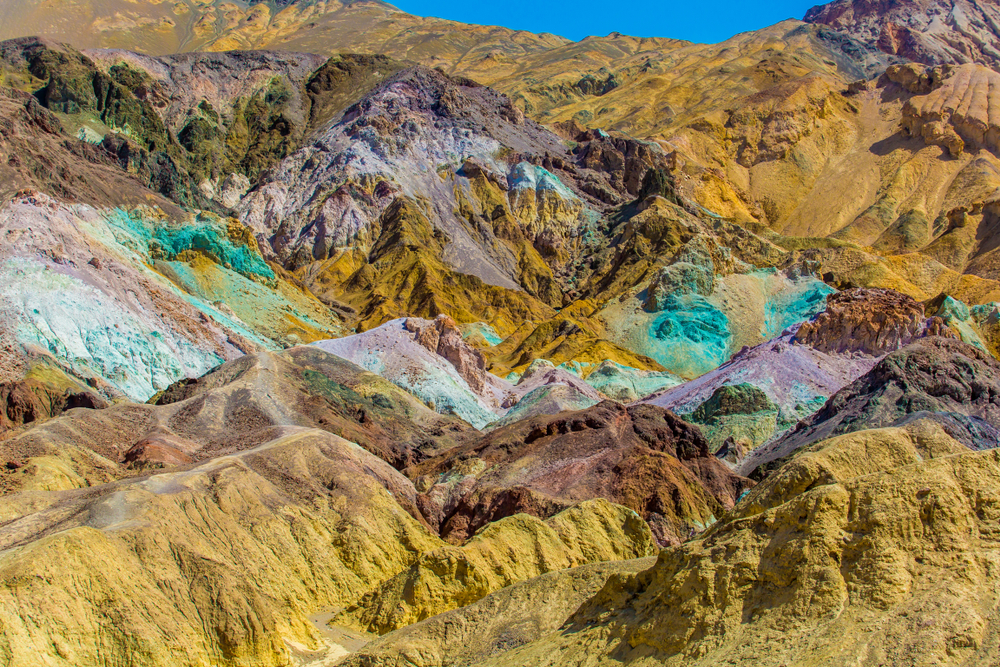
Hidden away behind mountains of faded yellow, Artists Palette is one of the most visited attractions in all of Death Valley National Park and the state of California as a whole.
A scenic drive of wide turns and natural bridges takes you up to a natural wonder that’s impossible to miss, as its bright colors pop against the desert terrain.
This natural wonder got its name as Artists Palette because of its surprisingly vibrant colors including purple, pink, blue, red, and green, resulting from volcanic compounds and the oxidation of minerals. There are no trails to hike, but you can climb to different points around and through the Palette to get up close to the different colors.
Plan your visit at sunrise or sunset for an even more dramatic array of colors on an already colorful formation.
2. Cima Dome
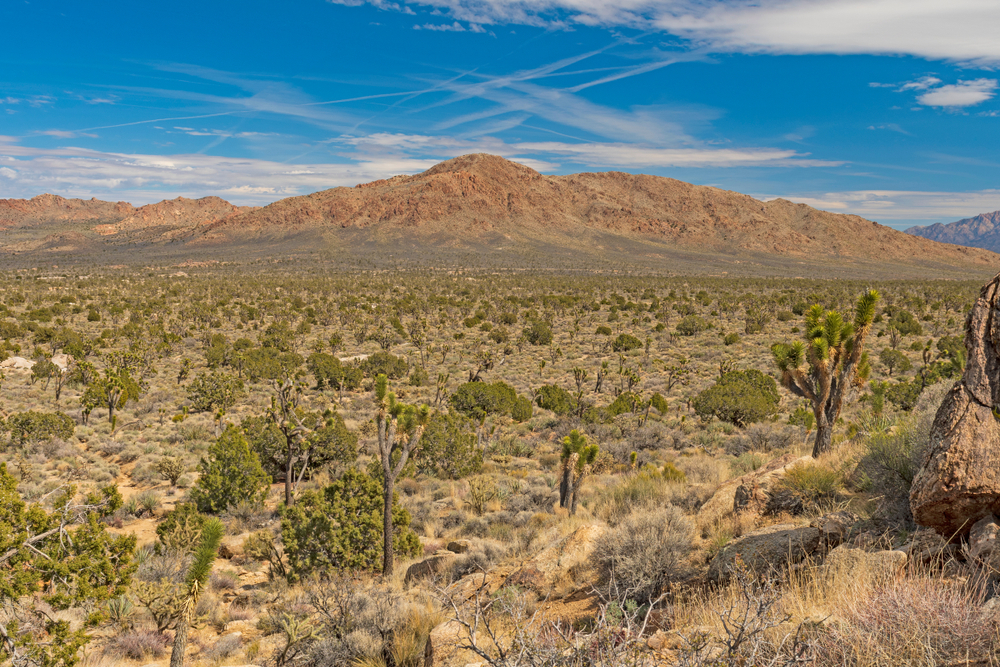
Not many people know about the natural wonder tucked away within the depths of the Mojave Desert, but once you see Cima Dome, you’ll be telling all your friends and family to plan a visit.
Once a rugged peak, Cima Dome has become so rounded that if you stand at its center, you’ll feel like you’re looking through a fisheye lens.
Centuries of vicious erosion slowly transformed this craggy mountain into a smooth slope nearly 15-miles wide. In some ways, it looks more like a giant mound than an actual mountain.
For the best way to experience the dome and all its glory, plan a hike on the Teutonia Peak Trail (3 miles in and out), where you can walk across the dome through the largest population of Joshua trees.
3. Inspiration Point
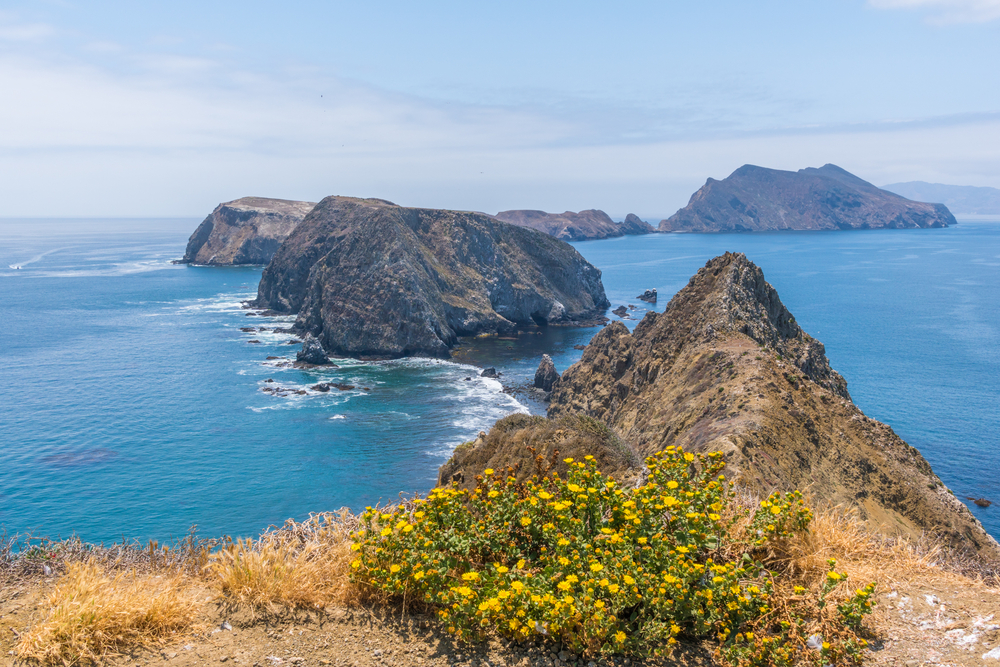
Located off the mainland of California in Channel Island National Park, Inspiration Point is one of the most picturesque viewpoints in all of California and people gather to admire it.
Although this natural wonder is extremely popular, the fact that you can only get to this island by reserving an hour-long boat ride to Anacapa Island deters crowds – so you won’t be overwhelmed, even on a busy day.
You’ll be in awe before you even get to the island as you watch dolphins play alongside your boat and admire 4 other islands out in the distance.
The real show stopper, however, is Inspiration Point – a collection of small, island-like ridges that look like stepping stones for a giant – and the views go on for miles.
These large volcanic rocks peppered with wildflowers are truly a wonder, and the aqua blue waters that surround them only add to the beauty.
4. Lava Tube
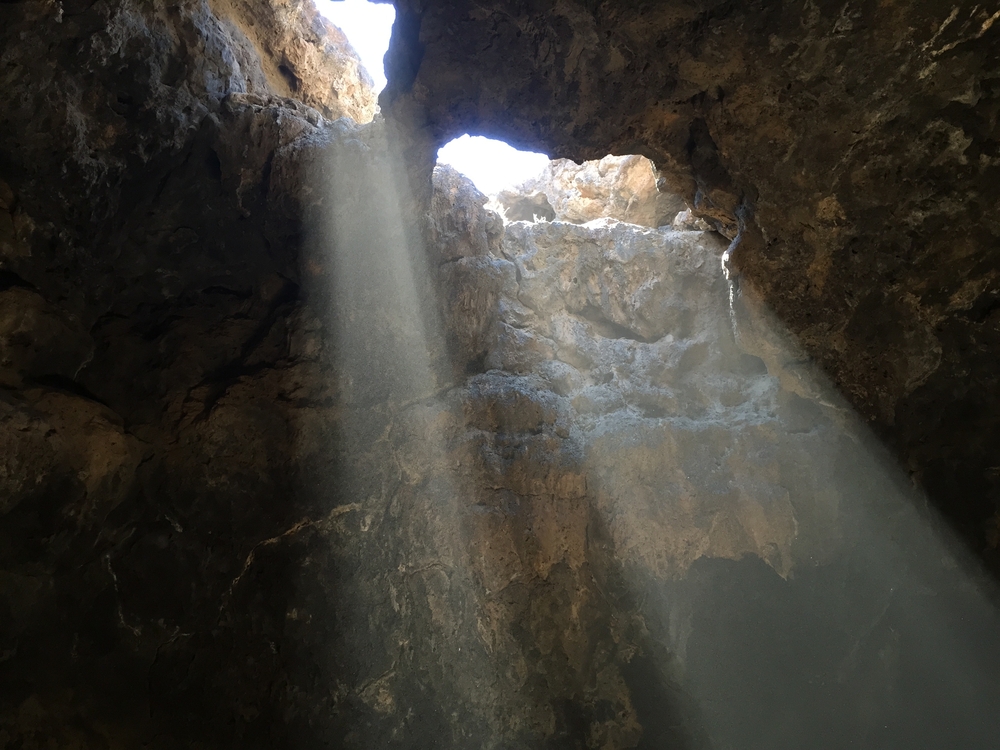
Another Mojave Desert hidden gem is the Lava Tube located in the Mojave National Preserve, and has formed perfectly to create a natural wonder like no other.
You’ll need a vehicle with 4 wheel drive and a pair of good hiking shoes to safely navigate the extremely rough road and hike about a half-mile through black volcanic rock to reach the lava tube.
Once you arrive at the mouth of the tube, you’ll find metal steps that’ll guide you down into its depths for a better look at what lies inside.
The particular kind of lava produced by past volcanic eruptions and the process in which it cooled created large holes and tubes that let in sunshine. On sunny days, these holes create a spotlight effect – lighting up a rather dark cave, and creating a dramatic scene that is nothing short of amazing.
5. Joshua Tree National Park
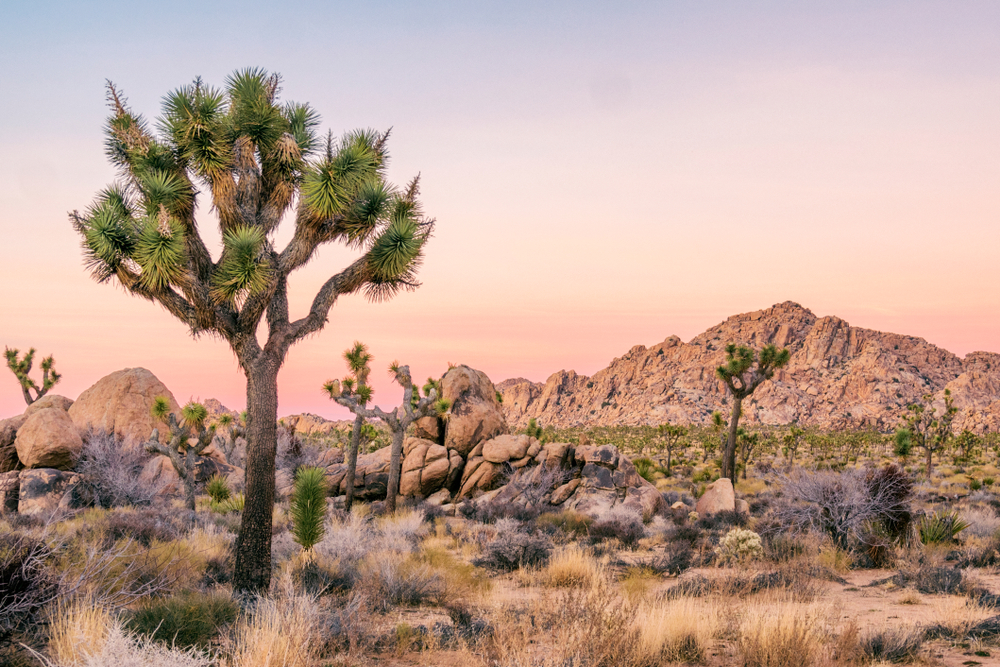
With such a diverse environment and so many geological features to admire, you can definitely consider Joshua Tree National Park a natural wonder in itself.
For starters, the national park is the meeting ground for 2 very different desert terrains – the Mojave Desert and the Colorado Desert. There are certain trails, like the Lost Palms Oasis Trail, where you can even see Colorado and Mojave Desert plant species living in the same vicinity.
However, the most unique natural wonder in the park is easily the Joshua Trees, that only grow in the Mojave Desert, with almost their entire population in Joshua Tree National Park alone. Their strange appearance has been attracting visitors for ages.
6. Racetrack
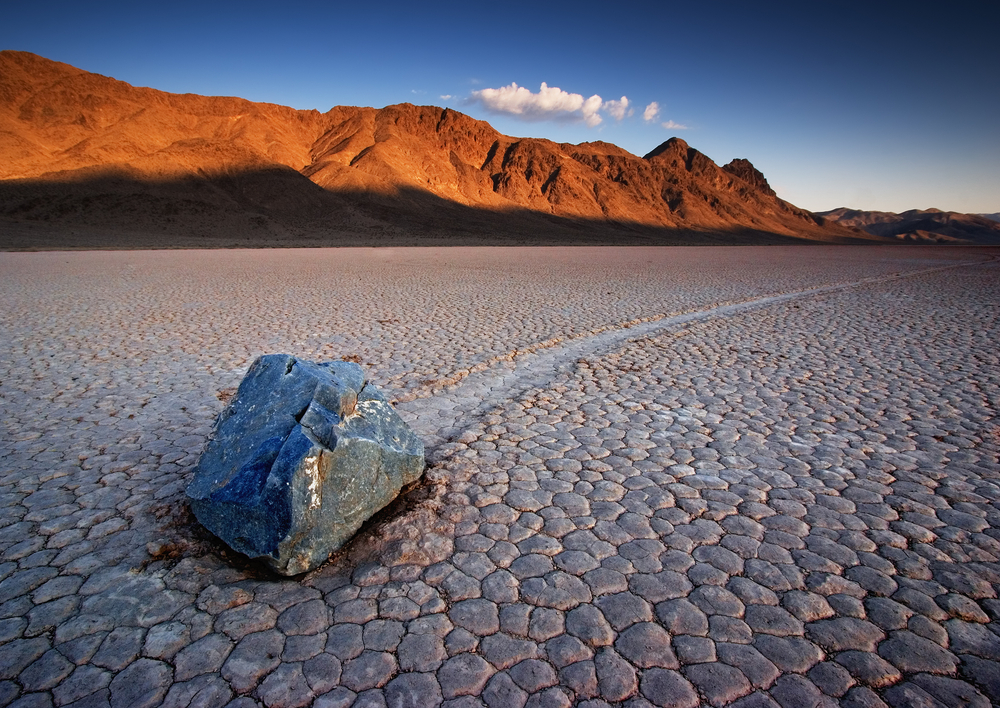
Located deep within the depths of Death Valley National Park, the Racetrack is one of the most intriguing natural wonders – and its remote location doesn’t attract many visitors.
One of the most rugged roads in Death Valley leads you to the Racetrack, and many end up with flat tires before ever reaching its beauty – so don’t attempt a visit unless you have high clearance and quality tires.
Once you reach this peculiar place, you’ll be instantly amazed by the dried lakebed that goes on for miles and the strange rocks that spread across it. These rocks look as though they’ve been pushed from one location to another with an engraved path (or, racetrack) to prove it.
There’s still no definite conclusion as to how these rocks have moved. Some are much larger than others, but scientists believe it’s due to some combination of extreme wind and water erosion.
7. Slot Canyon Trail
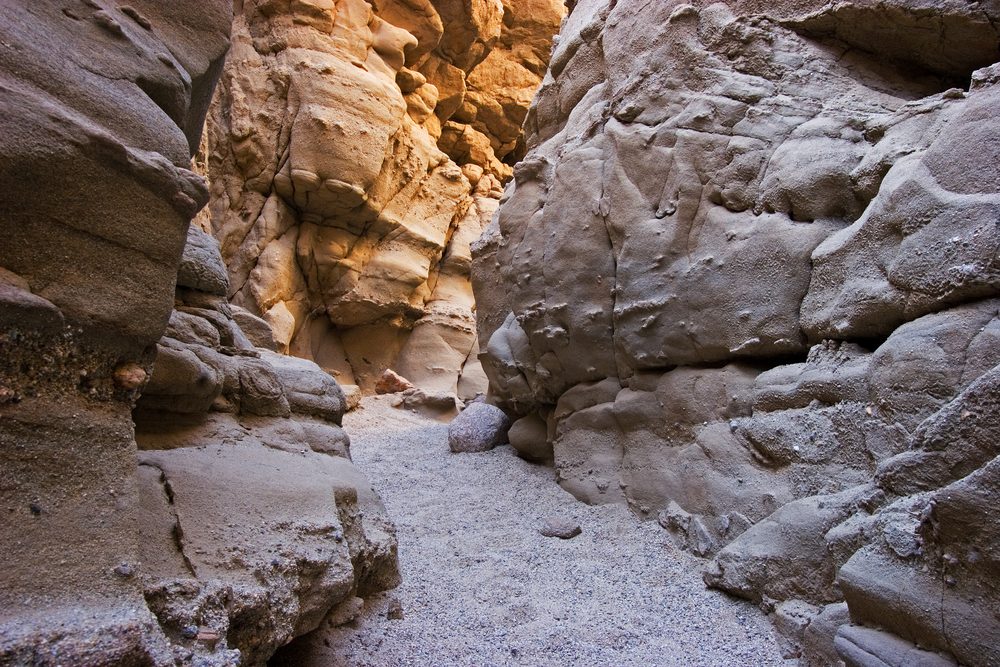
Although the Slot Canyon Trail is pretty difficult to find, it’s worth every dedicated second of searching and is truly a wonder to be found.
Hidden away in Anza Borrego State Park, you’ll need to take a drive down a semi-rough dirt road and pay close attention, map in hand, to figure out where to turn for the trailhead.
The 1-mile hike quickly opens up into a massive slot canyon, formed over millions of years, thanks to water erosion caused by things like flash floods.
The further you walk into the canyon, the narrower it becomes – with sections where you may even have to turn to your side in order to pass through.
8. Bear Gulch Cave
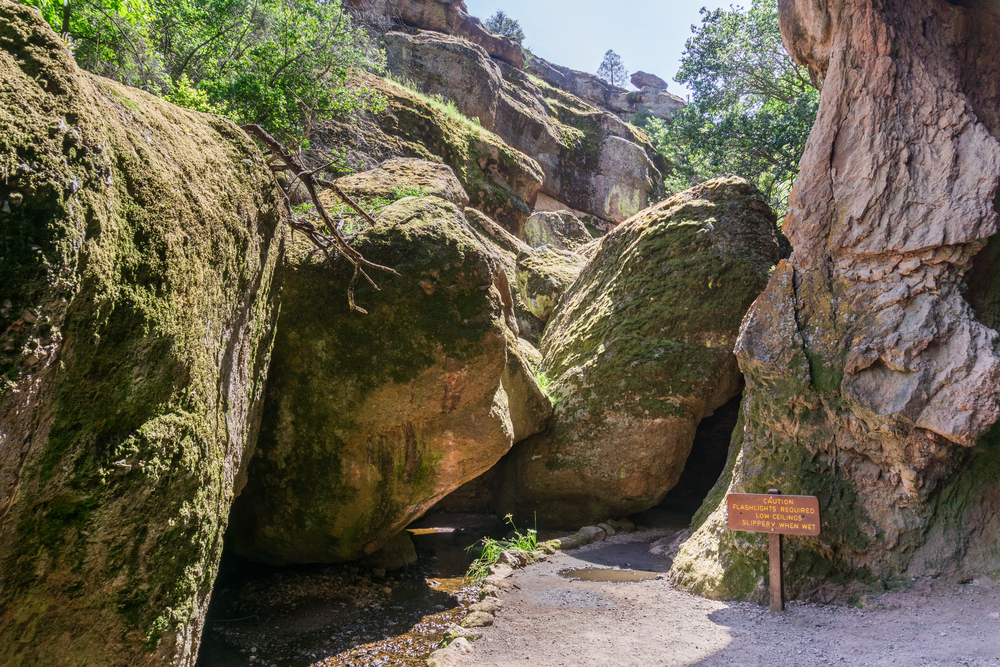
Unlike many caves you’ll find peppered throughout California, Bear Gulch Cave was the product of a cave-in, rather than the flow of lava, making it one of the state’s rather unique natural wonders. Made completely of giant boulders that caved in and landed perfectly to create a massive cave, it’s a truly astonishing sight to see.
Nestled within Pinnacles National Park, the cave is open during certain parts of the year to avoid disrupting the habitat of Townsend’s big-eared bats.
You’ll walk about a mile to the entrance of the cave, where you’ll need to use a flashlight to navigate some of its darkest points and climb on all fours to exit out the other side.
9. Big Sur Coastline
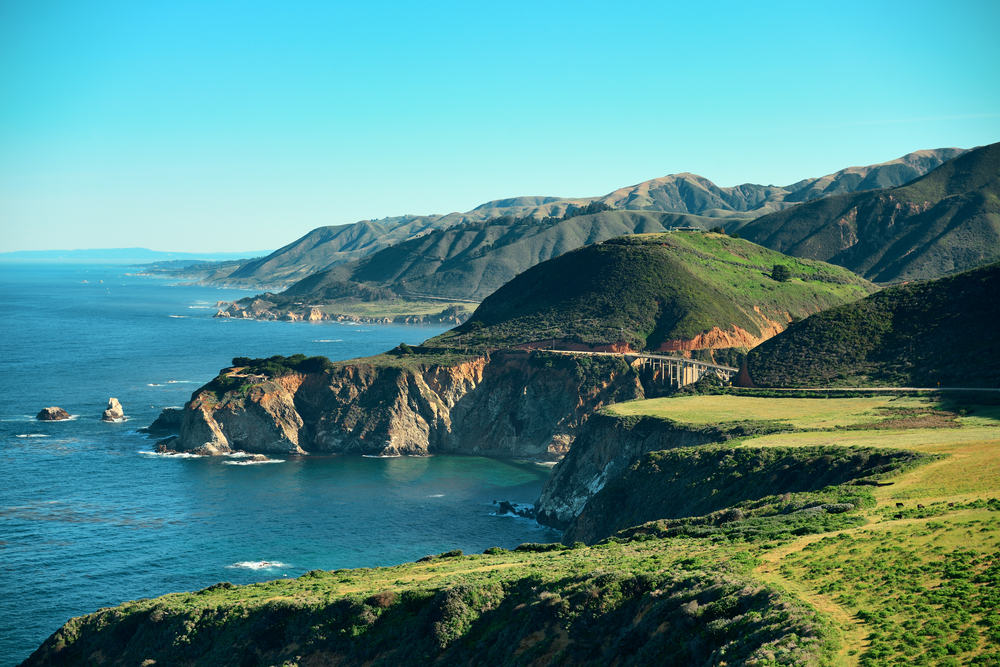
Stretching out over 100 miles, the Big Sur Coastline is a wonder comprised of rugged cliffs bordering the seacoast of the Pacific Ocean, in the western part of California.
You can appreciate its breathtaking views by going for a drive on the coastal road that narrows and winds through the mountainside.
Stop at one of the pull-offs and carefully walk to the edge of one of the cliffs to see the jagged rocks that lie in the water below and the strong waves that crash along the cliffside.
You’ll cross Bixby Bridge, the tallest, single-span bridge in the U.S., along your journey. The bridge stands tall at 260 feet, and was built by prisoners in 1931.
10. Crystal Cave
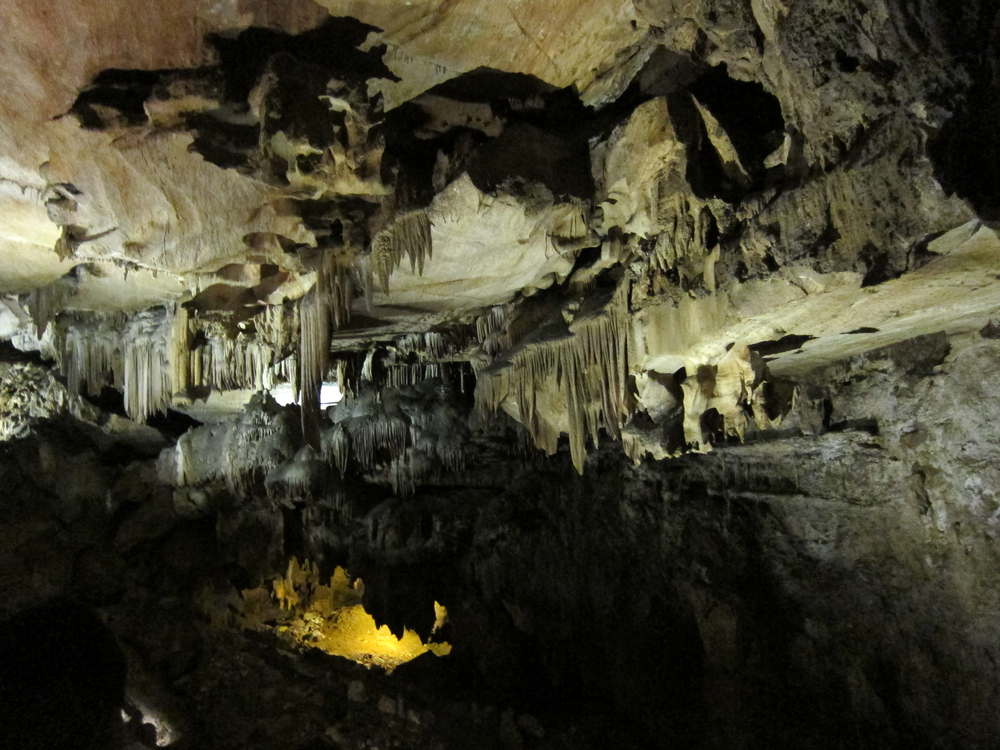
Tucked away in the heart of Sequoia and Kings Canyon National Park, Crystal Cave is a beautiful and interesting sight of marble formations.
Because of the nature of the cave and the importance of its preservation, the cave can only be explored by buying tickets for a guided tour and are only available in the summer months.
After you’ve made your way up the steep, 0.5-mile hill to the entrance of the cave, you’ll enter a world of magnificent marble with stalactites and stalagmites at every turn.
Check out their website to see what tours are available and accessible to everyone, as well as more thrilling choices for visitors in good physical condition.
11. Fossil Falls
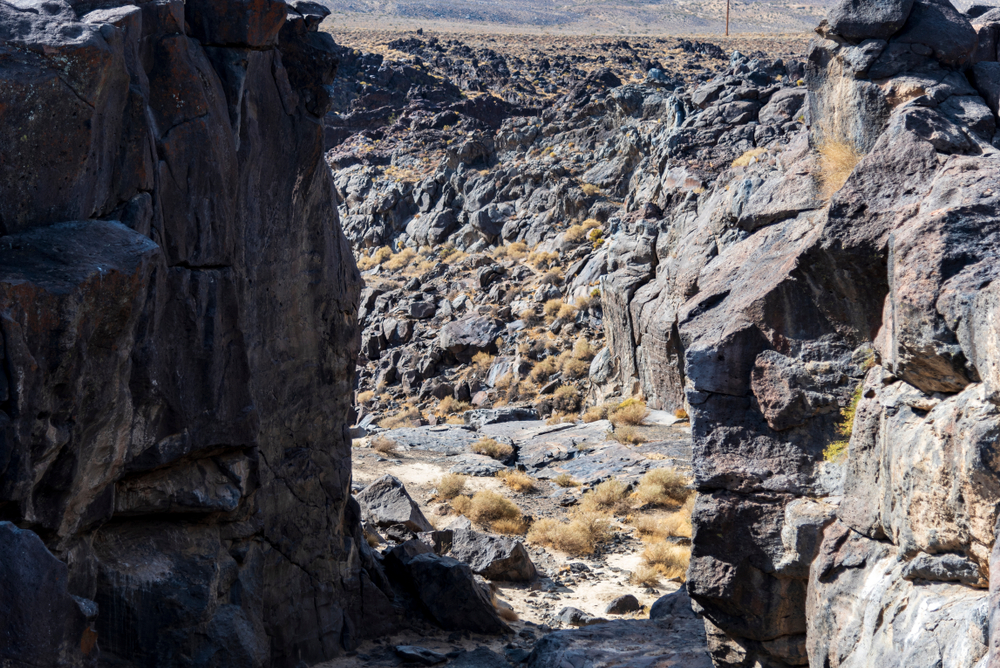
Located just a short drive off of Highway 395, Fossil Falls is a natural wonder you don’t want to miss – and is accessible to just about everyone.
You’ll walk less than a quarter-mile through a field of black volcanic rock before arriving at the cluster of fallen rocks. Scientists believe that these strange rocks are what remains of a once strong, flowing waterfall turned barren, which explains the rocks’ uncanny resemblance.
The waterfall was powered by the meltwater of massive glaciers during the ice age, causing the cliffside to be reshaped by a combination of its force and the volcanic rocks it pulled along with it.
This rare event and unique kind of erosion, known as plunge pool, makes Fossil Falls a truly unique natural wonder.
12. Sequoia National Park
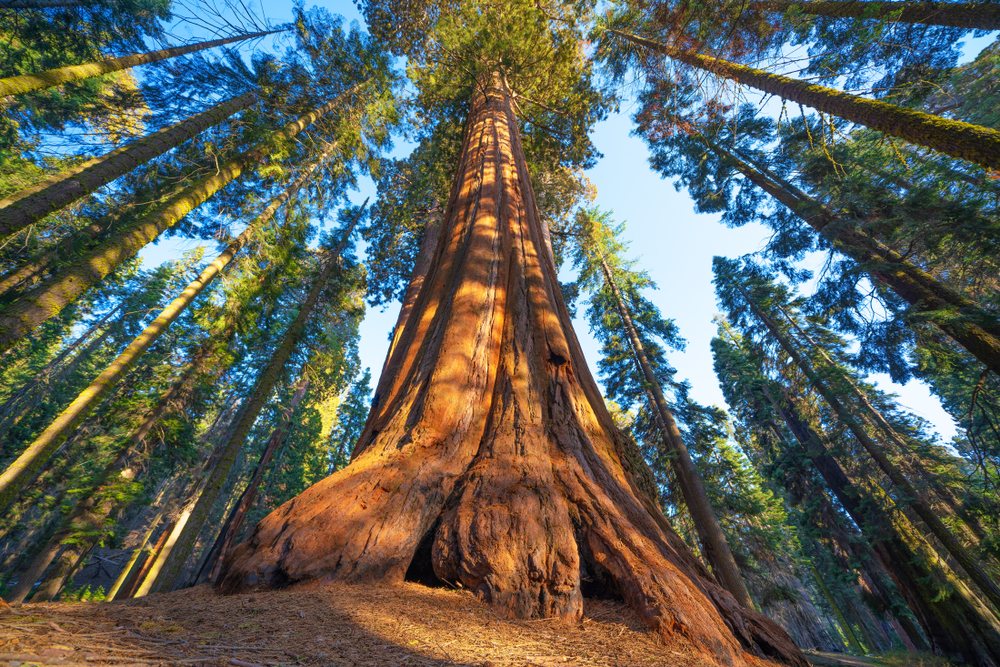
Home to towering giants, Sequoia National Park is a natural wonder in its entirety with certain features that stand out more than others.
Within the park lies the Giant Forest where you can find 5 of the largest trees in the world – but the main attraction is the General Sherman Tree that holds ranks at number one.
Sequoia trees grow to massive lengths and widths, unlike any other tree known to man, so a visit to any part of the park will leave you in awe of their size.
Aside from these monstrous trees, the park is also known for having the highest peak in the contiguous United States with Mount Whitney towering at 14,505 feet.
13. Mobius Arch
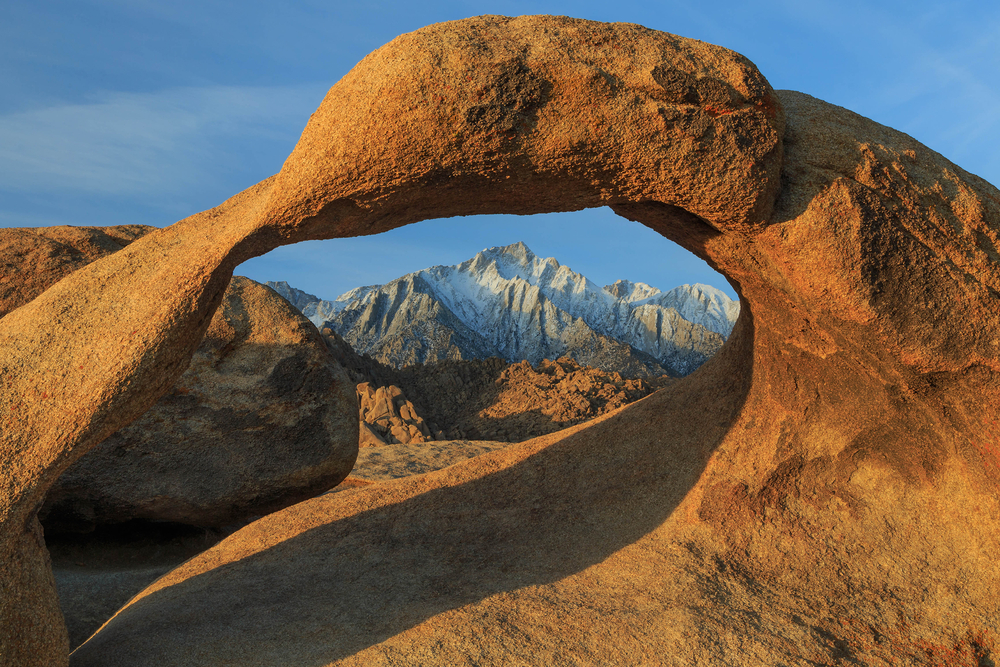
Located within the cowboy movie hotspot of Alabama Hills, the unique shape and positioning of Mobius Arch is what makes it stand out amongst a crowd.
Just a short dirt road and easy walk off of the main road, the arch is not advertised to the public – so make sure to grab a map from the Lone Pine Film History Museum before your journey.
The arch stands about 6.5 feet tall with a large gaping hole, that not only gives it its unique shape but also offers a unique, picturesque view of Mount Whitney in the distance.
While you’re visiting this iconic arch, stop by its lesser-known relative, Lathe Arch. While it may be smaller, it offers its own set of unique features, like its completely flat surface.
14. Morro Rock
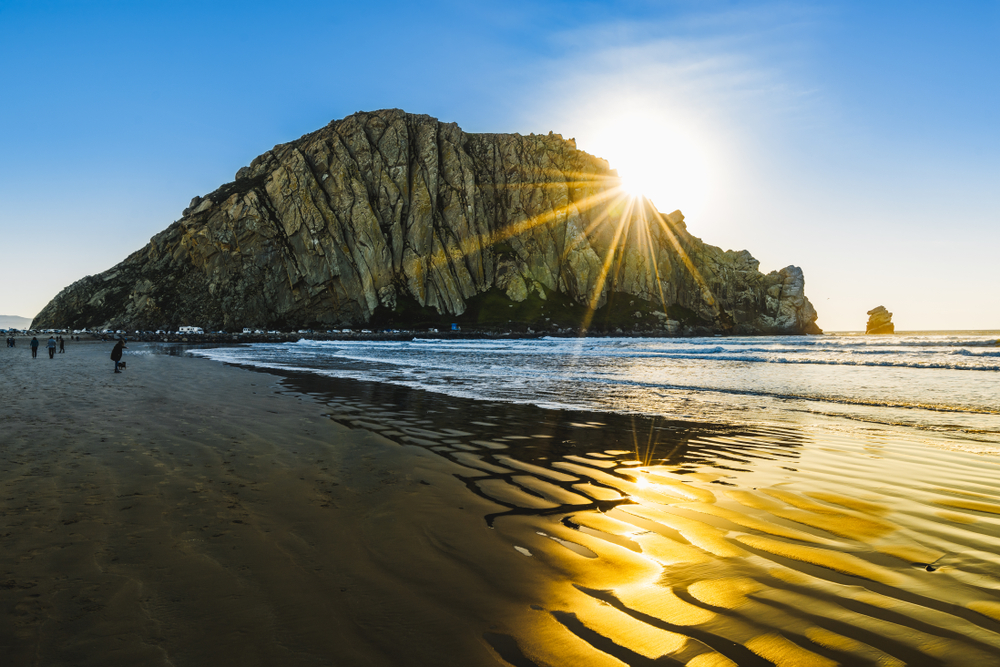
Formed millions of years ago, Morro Rock is one of 13 volcanic domes in the Morro Bay area but has made a name for itself due to its scenic view and massive size.
From the shores of Morro Beach, you can see an awe-inspiring view of Morro Rock without much difficulty, as it’s over 580 feet tall.
The rock is made up mostly of igneous volcanic rock and other minerals, but has grown in size due to centuries worth of bird feces that makes it both a strange and interesting sight.
Admire the rock from afar as you watch the many bird species that circle it and the harsh waves of Morro Bay that crash upon this preserved site.
15. Pfeiffer Beach
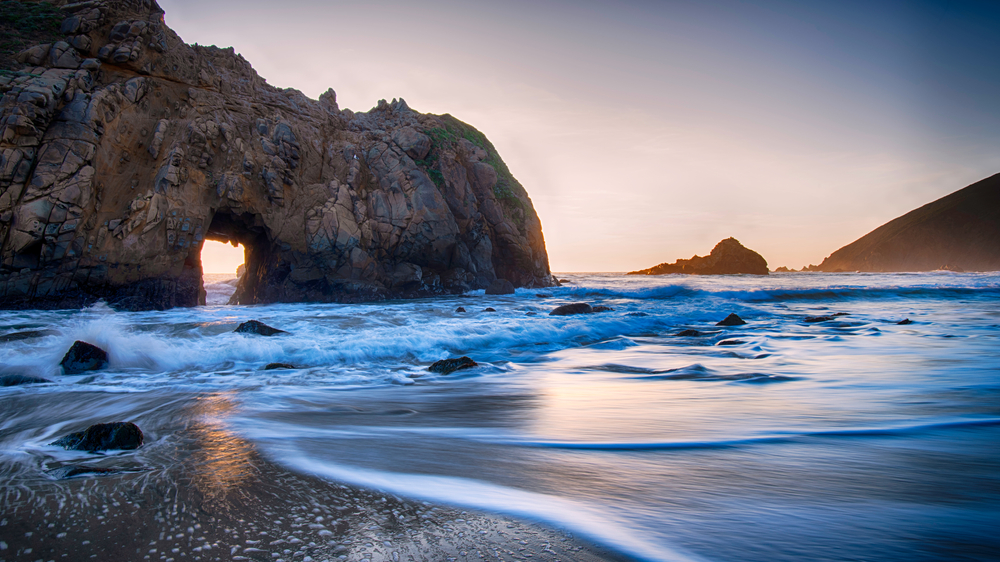
Like most of California’s best natural wonders, Pfeiffer Beach is hidden off the beaten path of Big Sur – but it’s definitely worth a bit of hunting to find this rarity.
The winding road that leads to the beach is extremely narrow, so only visitors driving passenger vehicles will have access. From there, it’s a short hike to reach the sand.
Once you arrive, you’ll be overwhelmed by the beauty of the Sycamore Canyon Creek pouring into the Pacific Ocean, with sand dunes on one side and a cove on the other.
The highlight of the beach is the large rock that has a natural doorway that lets in light as the sun sets and allows for waves to crash through it.
After you’ve spent time admiring this special rock, make your way over to the northern edge of the beach to check out the unique purple sand caused by minerals in the cliffside.
16. Darwin Falls
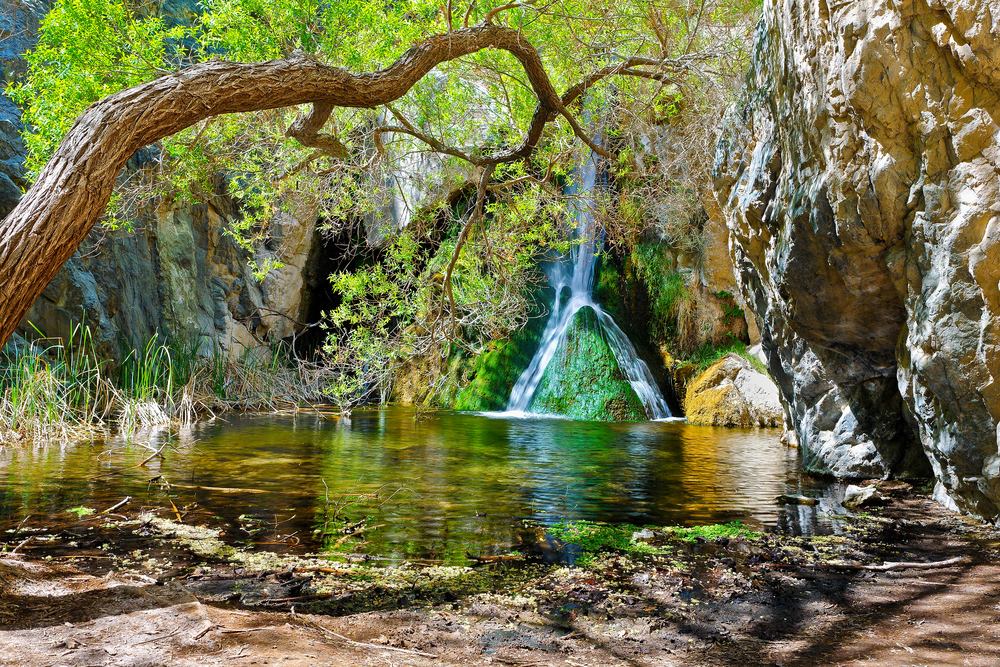
In a national park known for being the hottest and driest place in the country, Death Valley’s Darwin Falls seems to contradict everything we know about nature. The falls manage to flow year-round, regardless of the severe dryness of the California desert that surrounds it.
You’ll start your 2-mile hike in a desert setting just like any other trail in Death Valley – but the further you walk the more alive the environment becomes, with running creeks and growing plants.
The cottonwoods and willows that border the falls will make you feel like you’ve entered a tropical paradise without ever leaving the desert.
17. Bumpass Hell
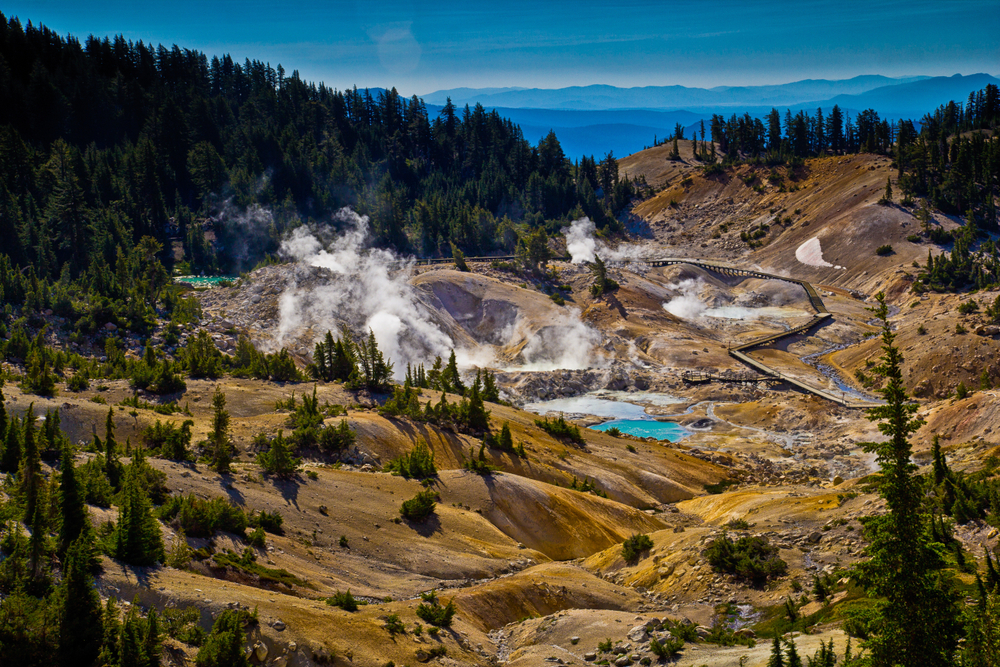
Located within Lassen Volcanic National Park, Bumpass Hell is home to the most extensive hydrothermal area in the entire park – and the crowds are proof of that.
This location holds true to its name with over 15 acres of heat, from its boiling pools of water to its active steam vents – and everything in between.
The hike is a 3-mile roundtrip, and you’ll know you’re nearing this rare destination when the wretched smell of natural gases and the strange sound of plopping mud pots begin to engulf you.
You’ll notice fumaroles, openings in the earth’s crust that release steam, peppered throughout the grounds with the largest, Big Boiler, sitting at a temperature of over 300 degrees Fahrenheit.
18. McArthur-Burney Falls
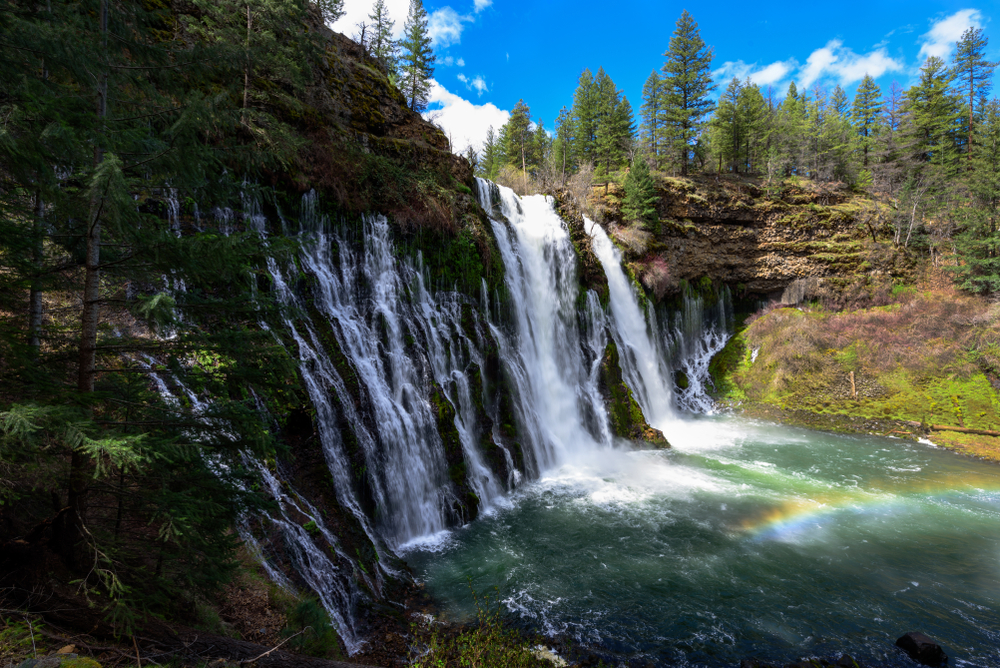
With an entire park dedicated to this natural wonder, you can spend all day admiring the gushing falls and exploring the 5 miles of hiking trails that are spread out across its 900 acres.
McArthur–Burney Falls Memorial State Park is located just a short drive from the mountain town of Burney and is known for being one of the oldest parks in the state of California.
You’ll find McArthur-Burney Falls at the entrance of the park, cascading down 129 feet from an underground spring into a creek that leads to the popular Lake Britton.
The falls’ unique geology is a product of past volcanic activity and millions of years of erosion, while rainwater and melted snow help to bring you such a gushing set of falls.
19. Emerald Bay
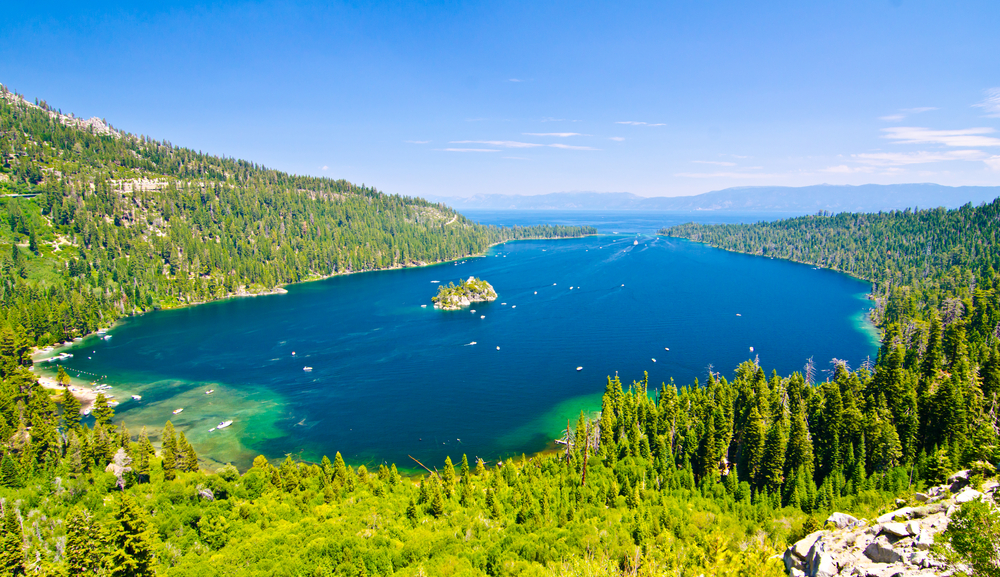
Established as a National Natural Landmark in 1969, Emerald Bay is one of the most stunning sights along Lake Tahoe, and there’s an entire state park dedicated to it as proof.
It wasn’t until 1994 that the state extended the park lines across its waters, making it the first underwater park of its kind and ensuring the security of what lies below.
Bordered by a series of mountains, the backdrop of Emerald Bay is nothing but rugged peaks – which only adds to the scenic beauty of this crystal clear bay.
Emerald Bay is known for being one of the clearest bodies of water known to man, and its vibrant colors of blue, turquoise and green are truly mesmerizing.
20. Fern Canyon
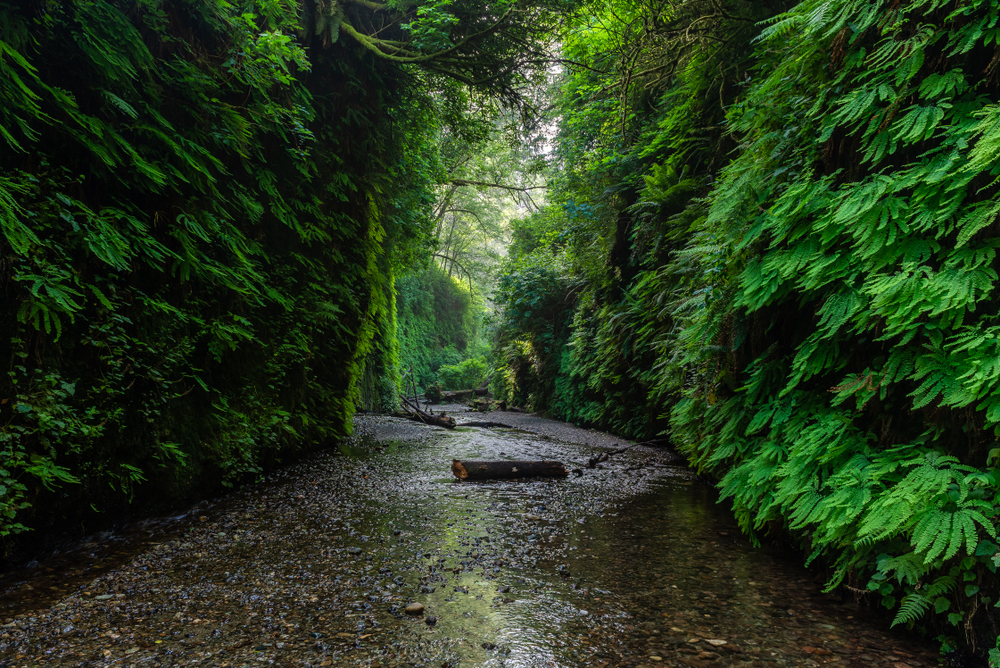
Located within Prairie Creek Redwoods National Park, Fern Canyon is a narrow canyon of life and is known for being one of the locations in Jurassic Park 2 after filmmaker Steven Spielberg instantly fell in love with the place.
Small cracks and divots in the canyon walls allowed for the growth of a variety of ferns, and after centuries, the walls have become completely immersed in greenery.
The 1-mile trail takes you right through this wonderful site, and the use of footbridges allows visitors to walk through the creek without getting wet.
You’ll be amazed by the thick layer of plants that surround you and the constant sound of trickling waters is nothing short of relaxing.
21. Founders Grove

One of the most popular attractions on the north coast of California, Founders Grove sees an abundance of visitors each day – but don’t let the crowds deter you from visiting this natural wonder.
The grove is one of the most extensive homes to Redwood giants, and you can spend the entire day taking in the views as they loom over you.
Aside from the trees’ impressive size, there are specific rarities to admire along this half-mile trail, including the Founders Tree, which stands high above its neighboring trees at 346 feet.
Towards the end of the trail, you’ll come across the fallen Dyerville Giant, which was once the tallest tree in the park at 365 feet, and is still a spectacular sight, laying on its side.
22. Glass Beach
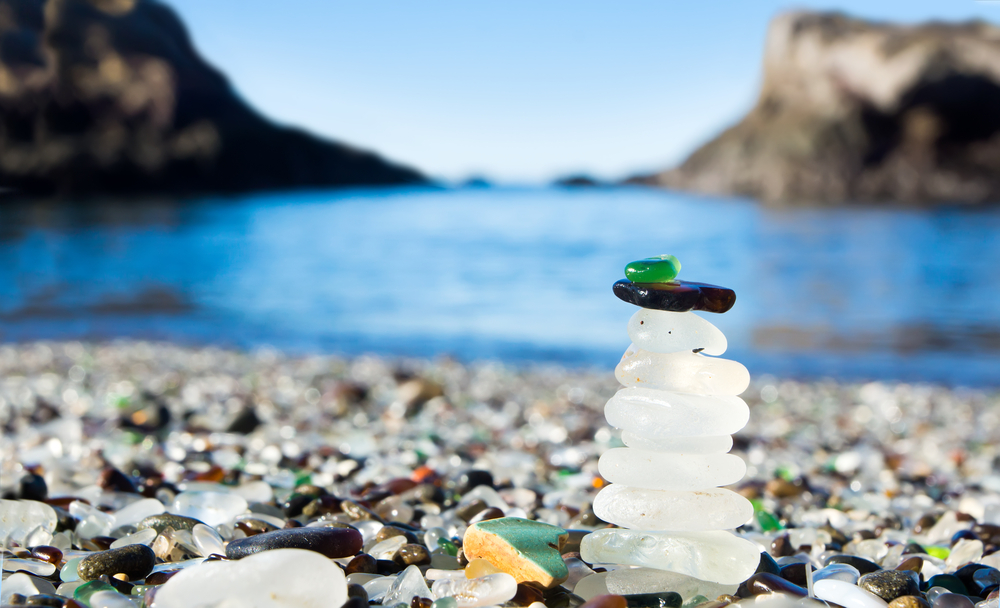
Once used as a dumping ground for things like glass, household appliances, and passenger vehicles, Glass Beach wasn’t always the awe-inspiring sight you see today.
By 1967, The California State Water Resources Control Board shut down the area and began working on a cleanup plan that would take decades to complete.
In the meantime, strong waves crashing upon the shore of the dump worked to break down the glass and pottery – slowly transforming them into the beautifully vibrant sea glass that now covers the shore.
23. Mono Lake

Nestled along the eastern tip of the Sierra Nevada, Mono Lake has been around for nearly a million years – and its strange geology makes it one of the most interesting natural wonders to explore.
The lake is located in the Mono Basin, and is one of the few saline soda lakes in the area with extreme salt concentration and a high pH level.
Scientists believe that the lake was formed due to past volcanic activity and that the sediments buried in the ash are remnants of an even larger and more ancient lake.
24. Mt. Shasta
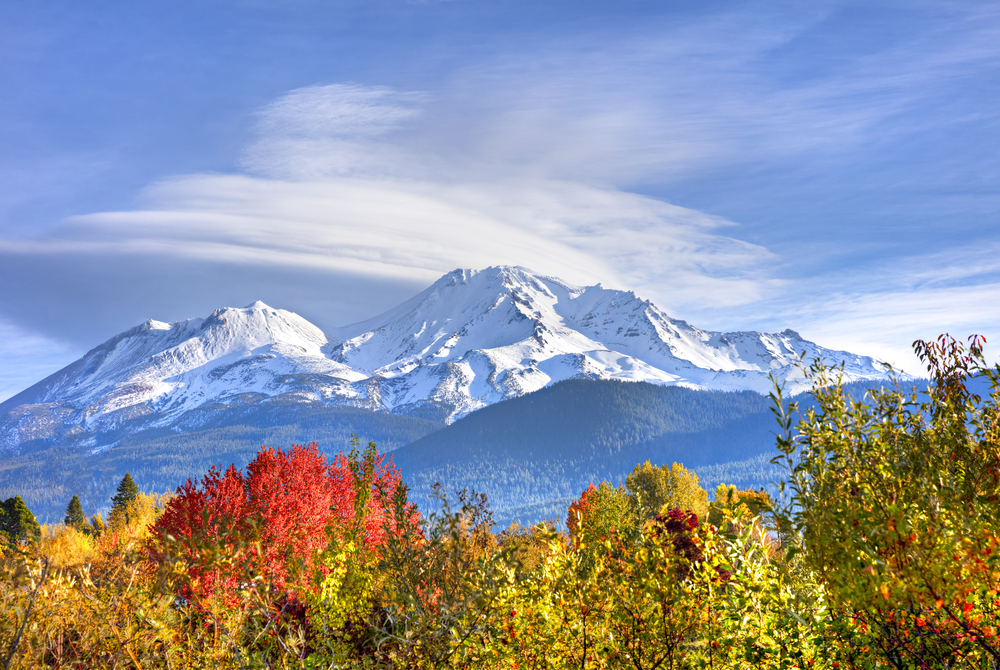
Although there hasn’t been volcanic activity at Mt. Shasta since 1786, the volcano is still considered to have the potential to erupt again and therefore can’t be labeled as dormant.
Mount Shasta stands tall at an elevation of over 14,000 feet and is known for being one of the highest peaks in California, let alone the Cascades.
The real interest point is its width, which runs nearly 100 miles – making it one of the largest volcanoes by volume in the entire country.
Go for a hike along one of the many trails that wrap around the mountain and embrace the feeling of spiritual energy that is said to radiate from its depths.
25. Petrified Forest
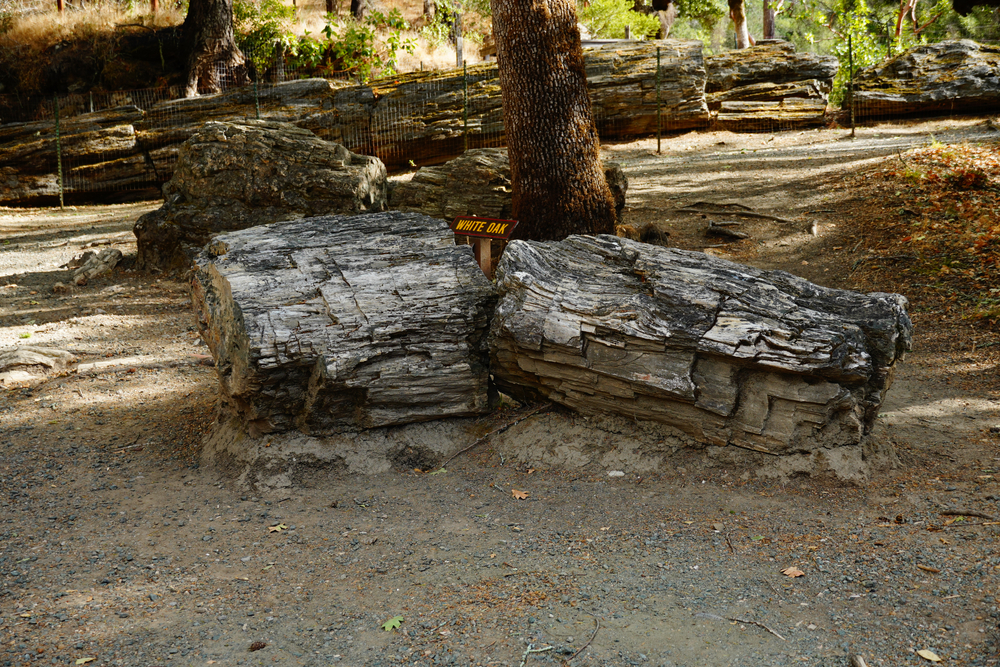
Home to the largest petrified trees across the globe, the Petrified Forest of California is a wondrous sight to be seen.
A massive eruption at Mount St. Helena that took place millions of years ago spread across the land, and began the process of petrifying these giant trees. They didn’t fully reach their petrified status for thousands of years after the fact, however.
Not only are these trees a wonder to be seen, but they also provide scientists with information about how redwood trees were once located across the state rather than just along the coast, as we see today.
Some of the trees were already thousands of years old before the eruption occurred, making this area one of the oldest ancient forests in the entire world.
26. Subway Cave
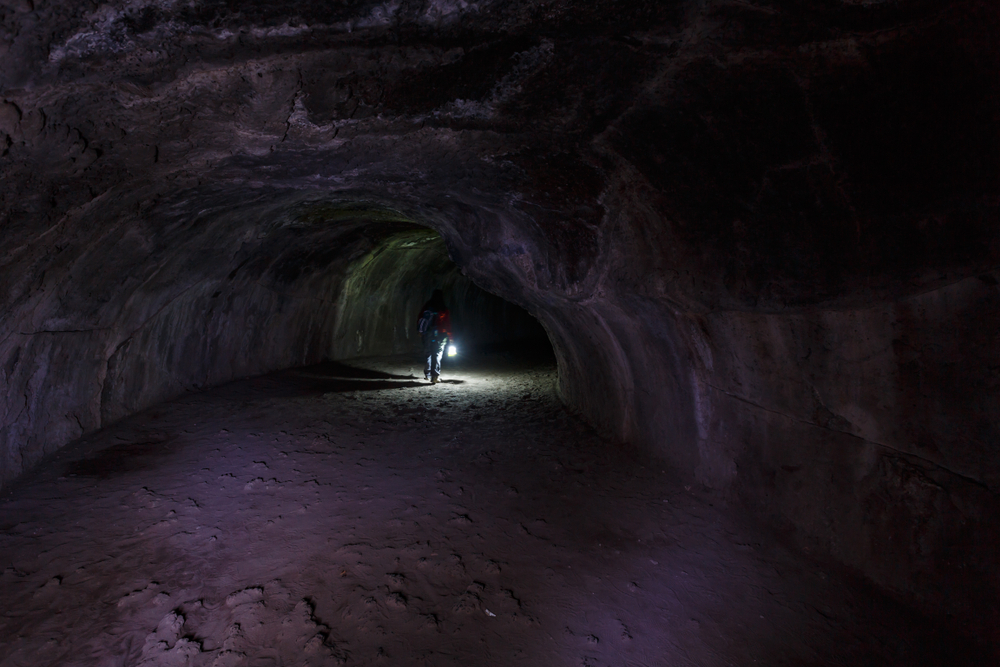
Located within the Lassen National Forest, the Subway Cave is one of the finest examples of how lava can create unique formations.
The cave, which has an uncanny resemblance to a subway tunnel, is a result of past volcanic activity that caused large amounts of lava to flow across the Hat Creek area.
The outer layer of lava began to solidify much quicker than its interior layers due to the air exposure, creating a tunnel for the lava to continue to flow. Explore the tunnel by taking a short hike and climbing down metal steps to get within its depths.
27. Whiskeytown Falls
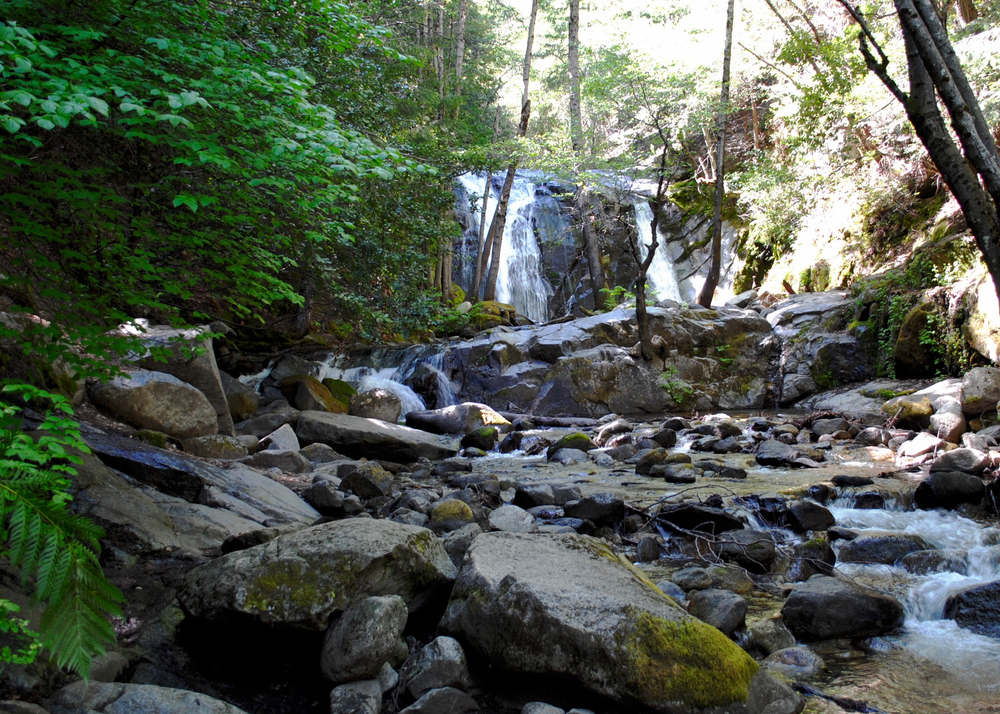
You’ll definitely work up a sweat on the strenuous 3.5-mile roundtrip hike up to Whiskeytown Falls – but you’ll be instantly rewarded with views of a beautiful cascading waterfall.
Interestingly enough, this giant waterfall was hidden from the public up until fairly recently, when park staff discovered its location and created an established trail in 2004.
This natural wonder has multiple tiers of cascading falls that total at over 220 feet of beauty, and can be accessed by trekking up 700 feet of elevation.
28. Yosemite Falls
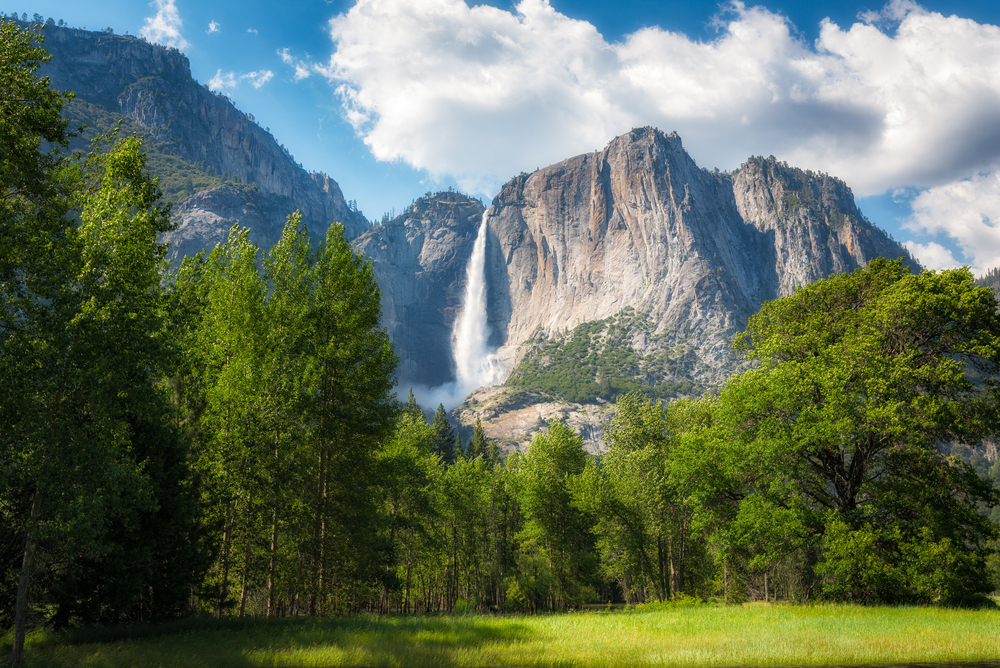
Easily one of the most popular attractions in Yosemite National Park, Yosemite Falls is the largest set of falls in the park towering at a total height of 2,425 feet – and is also one of the 17 Best Day Trips from Sacramento, California.
The tiered falls are so large that they’re broken up into sections, with various trails leading to Upper Yosemite Fall, the Middle Cascades, and Lower Yosemite Fall.
Plan your visit in the spring to see the falls in all of their glory, but know that they’re truly breathtaking at any time of year.
29. Laguna Beach
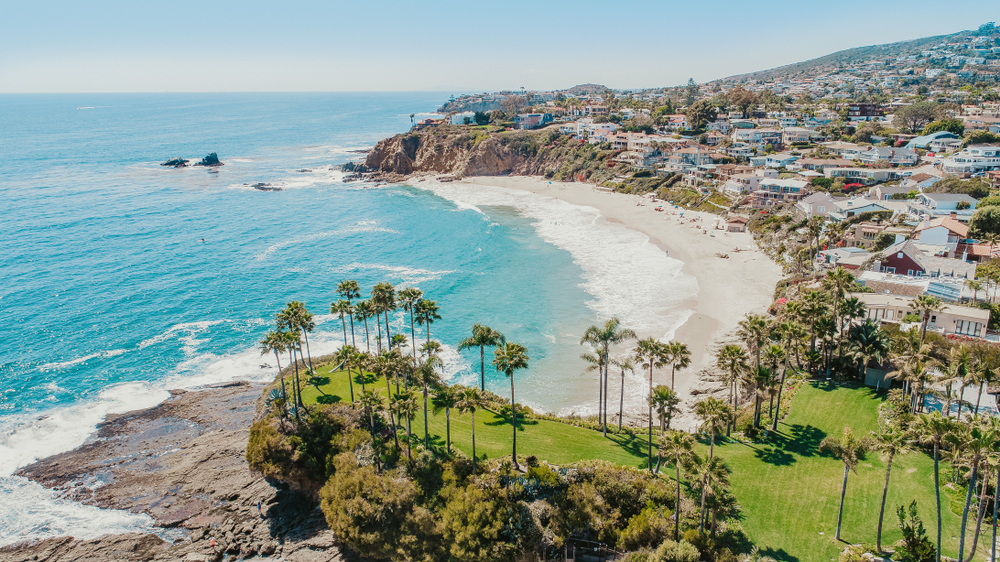
A combination of coastal views and dense tropical wilderness, Laguna Beach is a natural wonder that just keeps on giving – and is one of the Top 10 Best Places To Travel For Valentine’s Day!
You can spend days exploring the 7 miles of shoreline with large sea caves, scenic tide pools, high bluffs overlooking the clear waters, and sandy beaches at every turn.
If you’re looking for something more adventurous, venture inland and spend time exploring some of the 20,000 acres of forestry with hundreds of trails to choose from and breathtaking views to admire.
30. Mesquite Flat Dunes
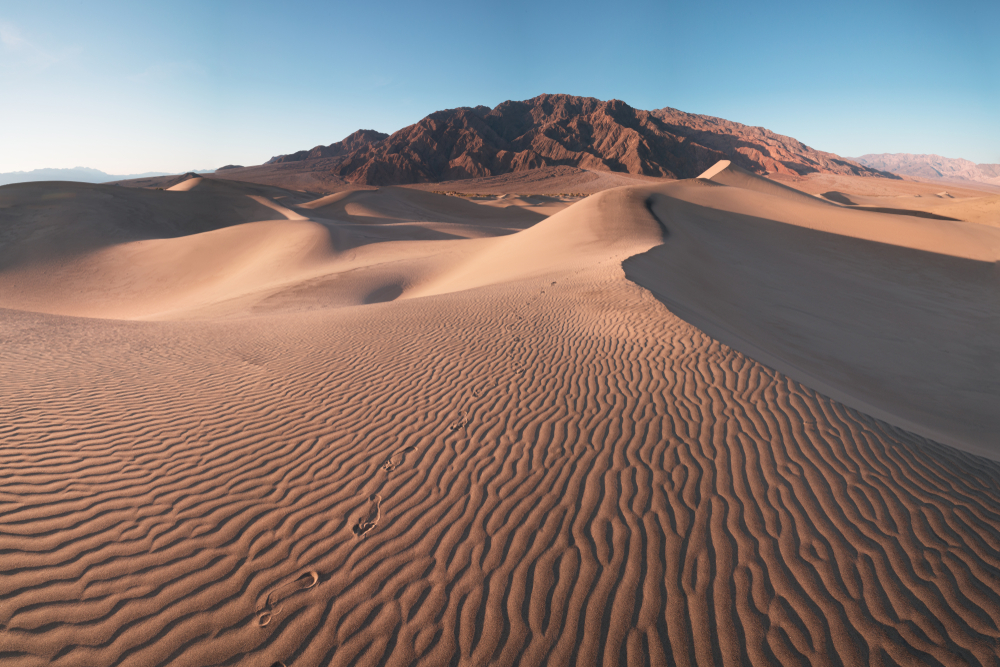
Named after the mesquite trees that call this area home, the Mesquite Flat Dunes are one of the many natural wonders that draw visitors to Death Valley National Park every year.
Although the dunes aren’t the highest in the park, they cover the most amount of space – and the largest dune in the group stands tall at a record height of over 200 feet.
There’s a hike that leads you to the dunes, but the constant push of sand from strong winds limits the marked trail and allows visitors to explore the dunes at their own leisure.
Sit at the base of the dunes, climb a dune or two, slide down a dune and watch the sun rise or set over the dunes as it complements the ripples in the sand. The options are endless!

